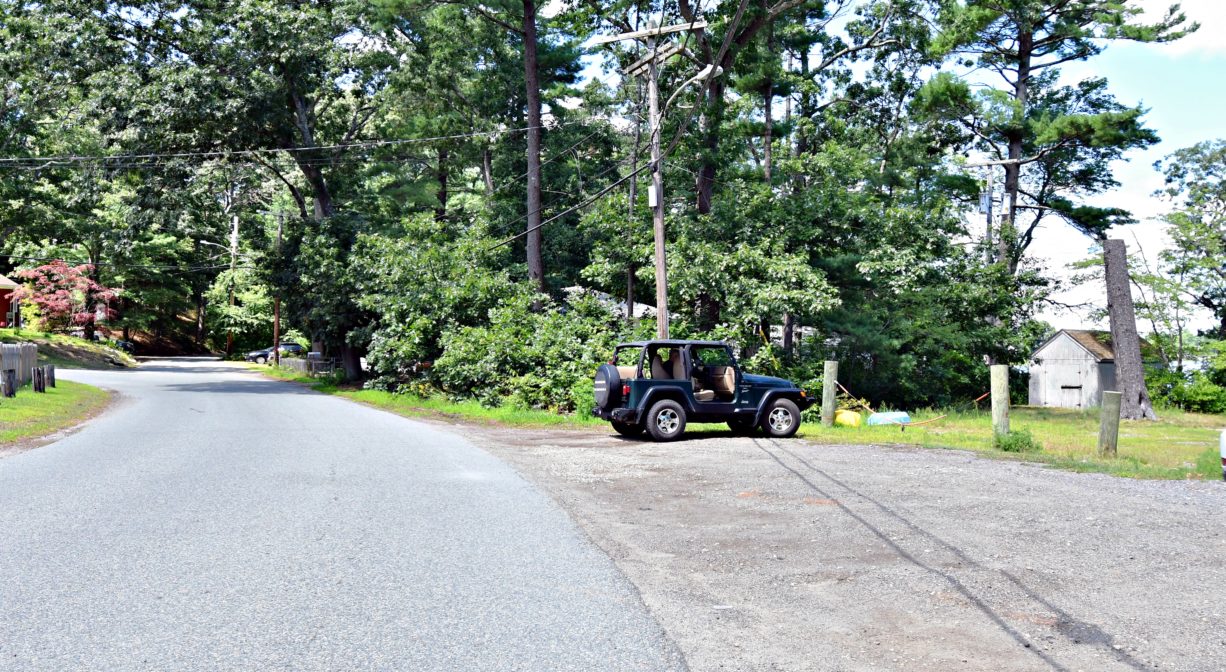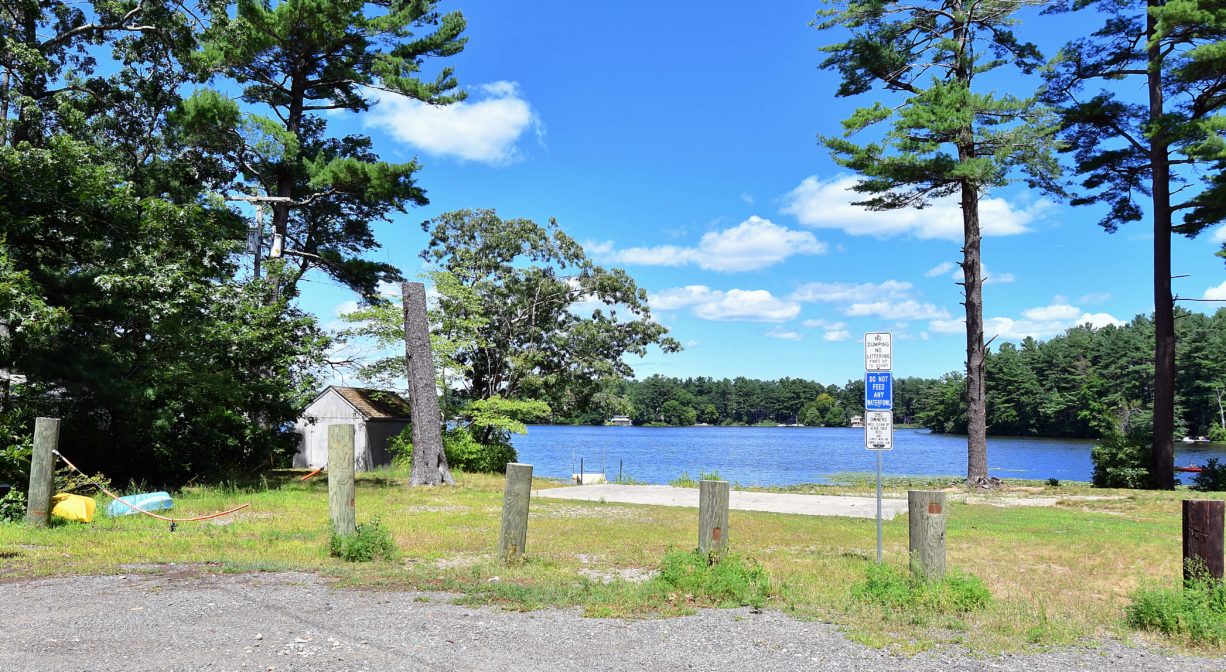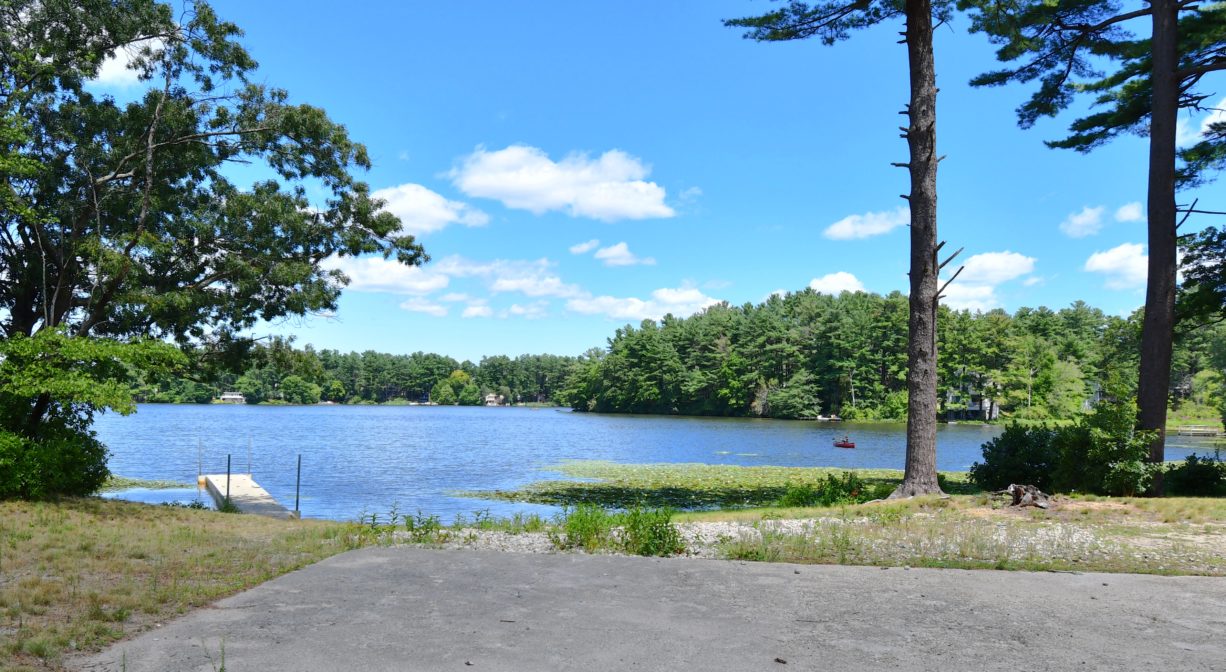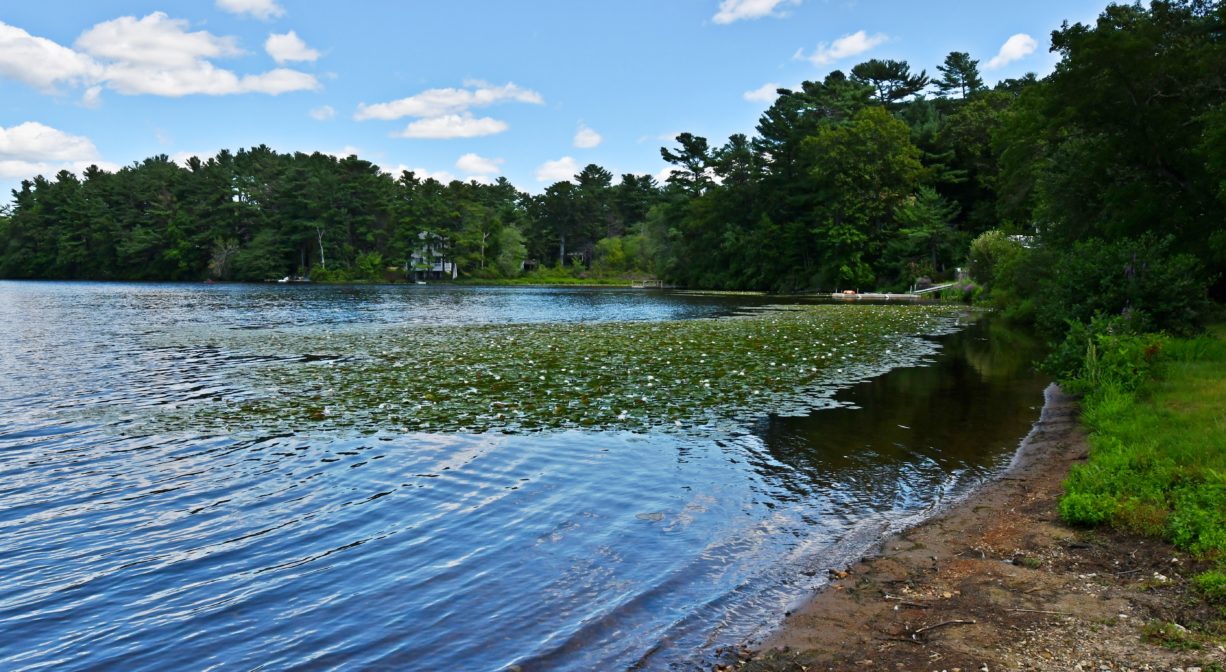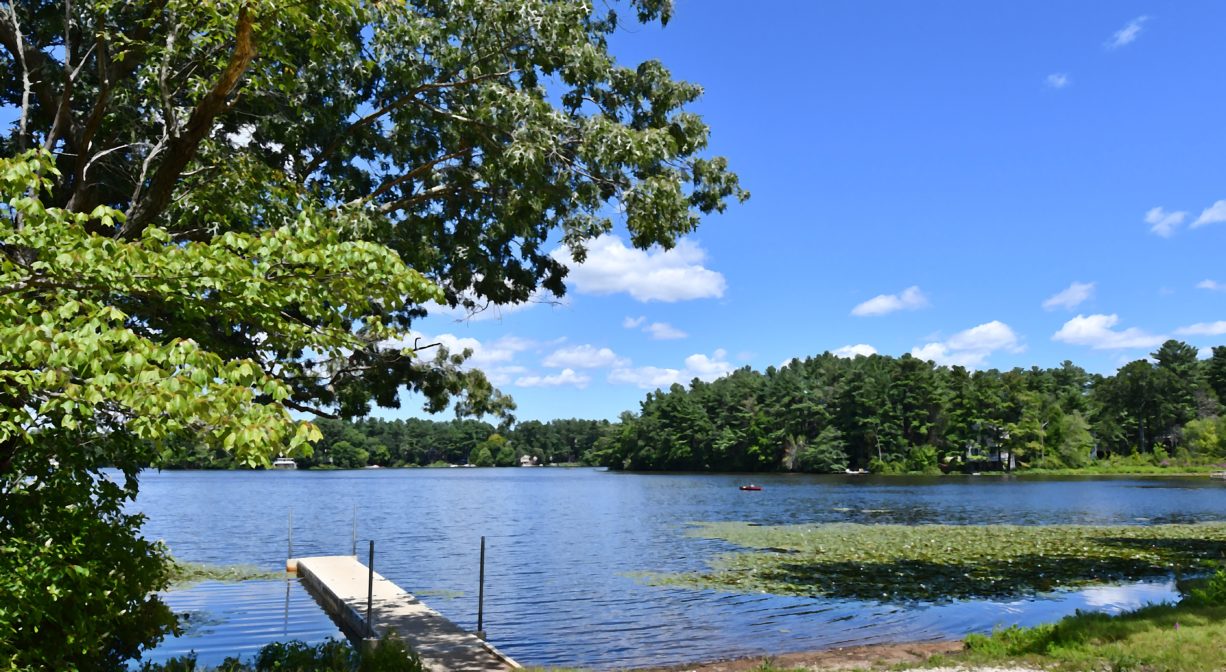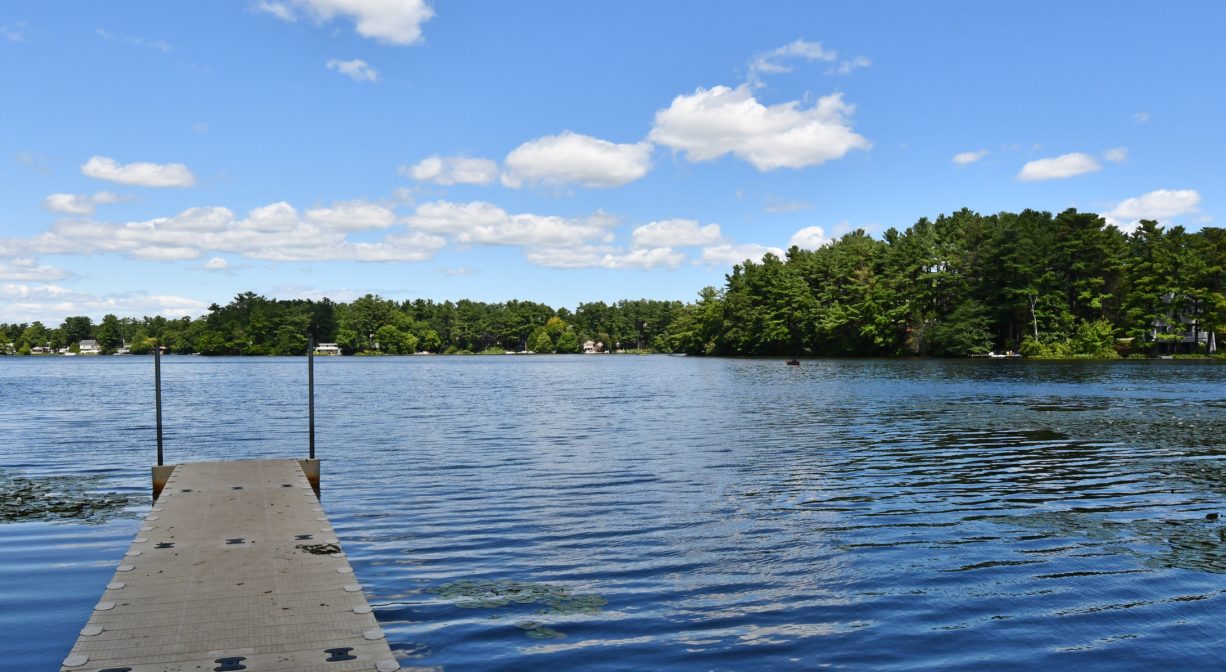Furnace Pond Beach, Furnace Colony Drive, Pembroke, MA, USA
Pembroke Town Manager: 781-293-3844
https://www.pembroke-ma.gov/town-beaches
Owned By: Town of Pembroke
Pembroke’s Furnace Pond Beach features a large pond in neighborhood setting. It is ideal for fishing, paddling and seasonal ice skating — for residents and non-residents. Before visiting, review town-wide beach regulations on the town website.
Furnace Pond is one of the Great Ponds of Massachusetts. Defined as a natural body of water larger than 10 acres, a Great Pond is held in trust by the state for public use.
FISHING ADVISORY: It’s important to know that some of our freshwater fisheries are contaminated with mercury, PFAS and/or other concerning substances. The Massachusetts Department of Public Health maintains an online database with up-to-date advisories regarding fish consumption, sorted by location. We recommend you consult this valuable resource when planning a fishing excursion.
Features
Furnace Pond was once known as Herring Pond. It gets its name from one of Plymouth Colony’s first blast furnaces, which was located nearby c. 1702 and operated by Lambert Despard. Bog iron raked from the pond and nearby bogs was smelted and cast into pots, kettles, nails, anchors, cannonballs, and fittings for shipbuilding. The first cannon ever cast in the U.S. were made here.
Later Furnace Pond became a seasonal destination, with a children’s summer camp on its shores, a handful of bathing beaches, as well as a community of vacation cottages, and even a Finnish bath house. Its shoreline is now developed with year-round homes.
The Pembroke Watershed Association, a grassroots organization was established in 2004. It works on behalf of all five of Pembroke’s ponds, monitoring water quality, obtaining grants for studies, providing education programs, and otherwise working for the benefit of the ponds’ well-being.
For centuries, the Pembroke Ponds were historically home to the Mattakeeset, a band of the Native American tribe known as the Massachuseuk (or Massachusett). They named their settlement Namassakeesett, or “Place of Much Fish,” and set up a fishing weir at the outlet of Furnace Pond.
Wampatuck (also known as Wompatuck, White Goose and White Deer) was Chief Sachem of the Mattakeesett. He maintained a lodge just off the pathway between Furnace and Oldham Ponds. This spot — on a promontory jutting into Furnace Pond — was later named Sachem’s Point in his honor. The restaurant Towne Tavern is now located there.
Wampatuck began conveying his lands to European settlers in the 1640s or 1650s (although “conveying” is a relative term, since the Europeans and Native Americans held distinctly different views on the notion of land ownership vs. use or stewardship). In a transaction known as the Major’s Purchase, today’s Pembroke and Hanson — was transferred to the Europeans in 1662. However 1,000 acres of this area, directly abutting the ponds, was retained as property of Wampatuck and his descendants. Queen Patience, granddaughter of Wampatuck, retained significant acreage on Furnace Pond, but sold it to European settlers before her death in 1788.
Please bear in mind that Native American cultures often favor oral histories to written ones. Much of what’s recorded about the history of the South Shore is from the perspective of European settlers. It’s not the whole story. To learn more about local Native American tribes, we encourage you to interact with their members. The Massachusett tribe at Ponkapoag and the Mattakeeset band of the Massachusett share information on their websites.
Habitats and Wildlife
Some of the fish commonly found in the 112-acre Furnace Pond include largemouth bass, white and yellow perch, black crappie, chain pickerel, brown bullhead, bluegill, pumpkinseed, golden shiner, American eel and alewife. Furnace Pond averages 5 feet in depth, with a maximum of 9 feet. There are 2.7 miles of shoreline.
Alewife herring spawn here and at Oldham Pond. They swim all the way upstream from the ocean to mate, returning every year. There is a fish ladder at the Furnace Pond Dam and a fishway between Furnace and Oldham Ponds, to facilitate their passage. According to the book Pembroke: Ancient Trails to the 21st Century, in 1865, 10,000 herring were deposited annually in Furnace Pond, but it is unknown how many years this restocking practice continued.
Furnace Pond is used as a secondary water supply for the City of Brockton. In the winter, water is pumped from the pond to refill Silver Lake. Water from Oldham Pond and various cranberry bogs flows into Furnace Pond. It continues downstream to Herring Brook, which flows into the North River and out to sea.
Historic Site: No
Park: No
Beach: Yes
Boat Launch: Yes
Lifeguards: No
Size: 107 acres
Hours: Dawn to Dusk
Parking: Limited on-site parking on Furnace Colony Drive.
Cost: Free
Facilities:
Fishing pier, launch site for canoes and kayaks.
Dogs: No
Boat Ramp: No
ADA Access: No
Scenic Views: Yes
Waterbody/Watershed: Herring Brook/North River watershed

